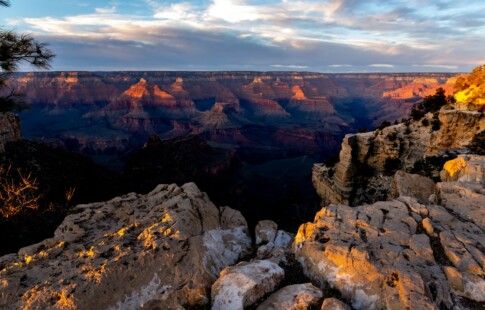
What You Need to Know About Desertification
We are reader-supported. When you buy through links on our site, we may earn affiliate commission.
With global temperatures rising, the threat of drought and desertification becomes clearer — lands become barren and moisture levels continue to drop in the world’s most vulnerable areas. Solving the world’s desertification problem starts with knowing what it is and how current practices can be improved to avoid its spread.
What is Desertification?
Desertification is the degradation of land through climate change and man-made activities. Drylands — arid and semiarid lands — undergoing desertification suffer from reduced biological productivity. Desertification threatens dryland ecosystems and affects the livelihoods and food security of millions.
It is one of the most significant challenges the global community faces, especially as it becomes a looming concern alongside climate change. Drylands make up about 40% of the Earth’s landmass. According to the United Nations Convention to Combat Desertification, desertification affects the lives of 250 million people worldwide.
What Causes It?
One of the myths about desertification is that it only happens in hot and dry locations. While it may make sense at first, this thinking needs to be corrected. Desertification can affect scrublands, woodlands and grasslands.
Desertification can be caused by the following:
- Overgrazing — Frequent and prolonged animal grazing can degrade soil as animals consume plants down to the ground. Grazing also promotes trampling, which kills plant roots that bind the soil together. When rains fall, they wash away the unprotected topsoil.
- Soil erosion — Heavy rains and strong winds can erode unprotected soil between planting and harvesting crops. Downpours can wash away the nutrients from the soil, while dust storms can scatter the topsoil across rangelands.
- Accumulation of salts in soil — Irresponsible irrigation practices can lead to salt-contaminated soils. When runoff water is used in irrigation, it evaporates and leaves traces of salt in the ground. Agricultural lands become barren and lose their ability to produce crops when contaminated with salt.
- Overconsumption of fuelwood — Rapid overconsumption of fuelwood and timber is a major contributor to desertification. Lands with denuded forests suffer greatly from reduced ground cover.
- Reduced rainfall — Prolonged droughts can exacerbate reduced rainfall in arid areas. Soil needs to retain water to grow vegetation and promote biological productivity.
What are the Effects of Desertification?
Desertification should be a cause of alarm for the global community. While there are naturally occurring deserts in the world with healthy ecosystems, the danger comes when desertification converts once-productive areas into barren lands.
Some of the adverse effects of desertification include:
Failed crops
As desertification takes over, the land loses its ability to produce nutrients to sustain crops. Farming communities worldwide depend on crops for their food and livelihood. Desertification can lead to food shortages and famine if paired with prolonged droughts and other effects of climate change.
Loss of ground cover
Ground cover is essential to keep soil healthy and productive. Increased temperatures and erosion can lead to reduced ground cover. Unprotected lands are more susceptible to loss of natural water supplies underground.
Reduced biological productivity
Plants accustomed to hotter and drier conditions can replace other native plant species and affect biodiversity. This can lead to degraded lands and negatively impact animal productivity.
Desertification can harm entire ecosystems by taking out various plant and animal species.
Even grazing livestock will be affected by barren lands. With fewer areas to graze in, farmers cannot feed farm animals and take them to market.
Decrease in water table content
Reduced rainfall is already an existing problem in affected areas. As the ground loses its ability to absorb and retain moisture, surface water and groundwater flow are reduced. This phenomenon can also lead to a lack of potable water for communities, plants and animals.
Polluted air and water
Storms can cause heavy downpours, leading to floods. Strong winds can whip up dust storms and blow away degraded topsoil. These two events can cause water and air pollution with dust and sedimentation.
Polluted water sources affect communities, agriculture and livestock farming. These consequences are interrelated and will only worsen if left untreated. Air pollution poses great health risks to humans and is one of the leading causes of cardiopulmonary diseases worldwide.
Possible Remedies for Desertification
Combating desertification should be one of the top priorities of the global community. It’s one of those pressing issues which can lead to disastrous consequences if left unchecked. Here are some ways to solve it:
Land rehabilitation
Regreening projects can be a viable solution to desertification. The goal is to reclaim desertified lands and bring back soil fertility. Some issues aggravating land degradation include irresponsible farming practices like planting only annual crops and failure to tend to soil after harvesting.
Planting rotational crops can help bring back the nutrients to lands. Farmers can maintain the soil’s productivity by replenishing its nutrients by alternating crop varieties on the same plot of land. Farmlands benefit from rotational planting as crops retain moisture from rainfall and hold the ground better.
Digging soil bunds into the ground can also help retain water from rains and delay water runoff. Farmers from Tanzania use this technique and supplement it by planting grass seeds to promote vegetation growth and improve the microclimate.
Ground cover development
Planting cover crops can restore ground cover for unprotected lands. This helps prevent soil erosion from heavy downpours and strong winds. Cover crops can include quickly growing plants that farmers can easily tend to.
Plant roots hold the ground better and cover crops can help sequester carbon and retain moisture better. Better soil management can significantly reduce the desertification of massive areas worldwide. With proper training, farmers and even local communities can contribute to restoring soil health and combat desertification.
Responsible grazing
Livestock farming poses significant environmental threats. Animal farming produces 15% of the total greenhouse gas emissions in the world. Raising cattle requires a massive land area to grow and when left untended, huge herds can overgraze portions of the land quickly.
Farmers must adopt responsible grazing practices like rotational grazing to help alleviate this problem. Systematic grazing ensures cattle and other livestock have enough to eat while giving the soil enough time to recover.
This is loosely based on the nomadic pastoralism practiced by livestock farmers hundreds of years ago. The farmers constantly move their animals from one place to the next to find grazing pastures. This allowed the soil to recover while the animal’s dung and urine fertilized it.
Restoring Lands for a Sustainable Future
Deserts are part of the world’s ecosystem. They have existed for millions of years and are crucial to the survival of countless animal and plant species. Global leaders must recognize the threats of desertification to productive lands and safeguard vulnerable communities before it’s too late.
Share on
Like what you read? Join other Environment.co readers!
Get the latest updates on our planet by subscribing to the Environment.co newsletter!
About the author
Steve Russell
Steve is the Managing Editor of Environment.co and regularly contributes articles related to wildlife, biodiversity, and recycling. His passions include wildlife photography and bird watching.





